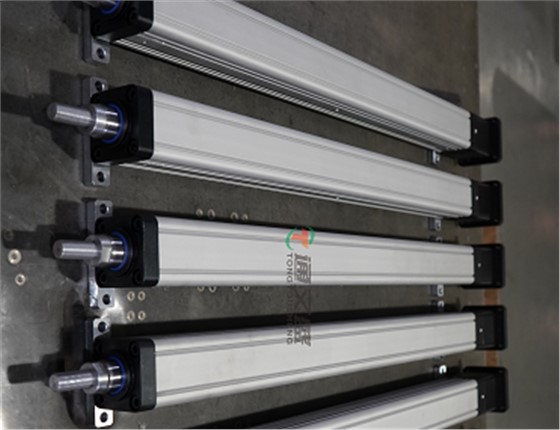Installation and Debugging of DC Electric Cylinders: Be Careful! Neglecting These Details May Lead to Big Problems!
As a precision transmission component, the DC electric cylinder plays an important role in automated equipment. However, many users often overlook some key details during the actual installation and debugging process, resulting in the DC electric cylinder being unable to perform at its best and even malfunctioning.
I. Preparation Work before Installing the DC Electric Cylinder
- Check Parameters and Confirm the Model: After receiving the DC electric cylinder, the first step is to check whether the product model and specification parameters are consistent with the order, including the stroke, thrust, speed, voltage, etc.
- Inspect the Appearance and Confirm Its Integrity: Check whether there are any dents, scratches, deformations or other damages on the appearance of the DC electric cylinder to ensure that no damage was caused during transportation.
- Read the Instruction Manual and Familiarize Yourself with the Structure: Carefully read the product instruction manual to understand the structure, performance, installation dimensions, wiring methods and other information of the DC electric cylinder.
II. Precautions during the Installation Process of the DC Electric Cylinder
- Ensure a Flat Installation Surface: The installation surface of the DC electric cylinder must be flat and smooth to ensure that the DC electric cylinder fits closely with the installation surface, and to avoid deformation or damage caused by uneven force.
- Pay Attention to Concentricity and Avoid Eccentricity: When connecting the DC electric cylinder to the load, ensure the concentricity between the two. Avoid the DC electric cylinder bearing additional radial force due to an eccentric load, which may affect its service life.
- Reasonably Select the Installation Method: According to the actual application scenario, select an appropriate installation method, such as flange installation, trunnion installation, foot mounting, etc., and ensure that the installation is firm and reliable.
- Reserve Sufficient Heat Dissipation Space: The DC electric cylinder generates heat during operation, so sufficient heat dissipation space should be reserved to avoid performance degradation due to overheating.

III. Key Points during the Debugging Process of the DC Electric Cylinder
- Check before Powering On: Before powering on, check again whether the wiring of the DC electric cylinder is correct and secure, and ensure that the power supply voltage is consistent with the rated voltage of the DC electric cylinder.
- Low-speed Trial Run: When the DC electric cylinder is running for the first time, it is recommended to conduct a low-speed trial run. First, observe whether the DC electric cylinder runs smoothly and whether there are any abnormal noises. Gradually increase the speed after confirming that the DC electric cylinder is operating normally.
- Set the Limit Switch: According to the actual stroke of the DC electric cylinder, set the position of the limit switch to avoid damage caused by the over-travel operation of the DC electric cylinder.
- Monitor the Operation Status: During the debugging process of the DC electric cylinder, closely monitor its operation status, such as temperature, noise, vibration, etc. Stop the machine immediately for inspection if any abnormalities are found.
IV. Daily Maintenance and Upkeep of the DC Electric Cylinder
- Regular Lubrication: According to the usage frequency and environment of the DC electric cylinder, conduct regular lubrication to reduce wear and extend its service life.
- Cleaning and Dust Prevention: Keep the surface of the DC electric cylinder clean and prevent dust and debris from entering the interior, which may affect its normal operation.
- Regular Inspection: Regularly check whether the fasteners of the DC electric cylinder are loose, whether the seals are aging, etc., and conduct maintenance and replacement in a timely manner.


